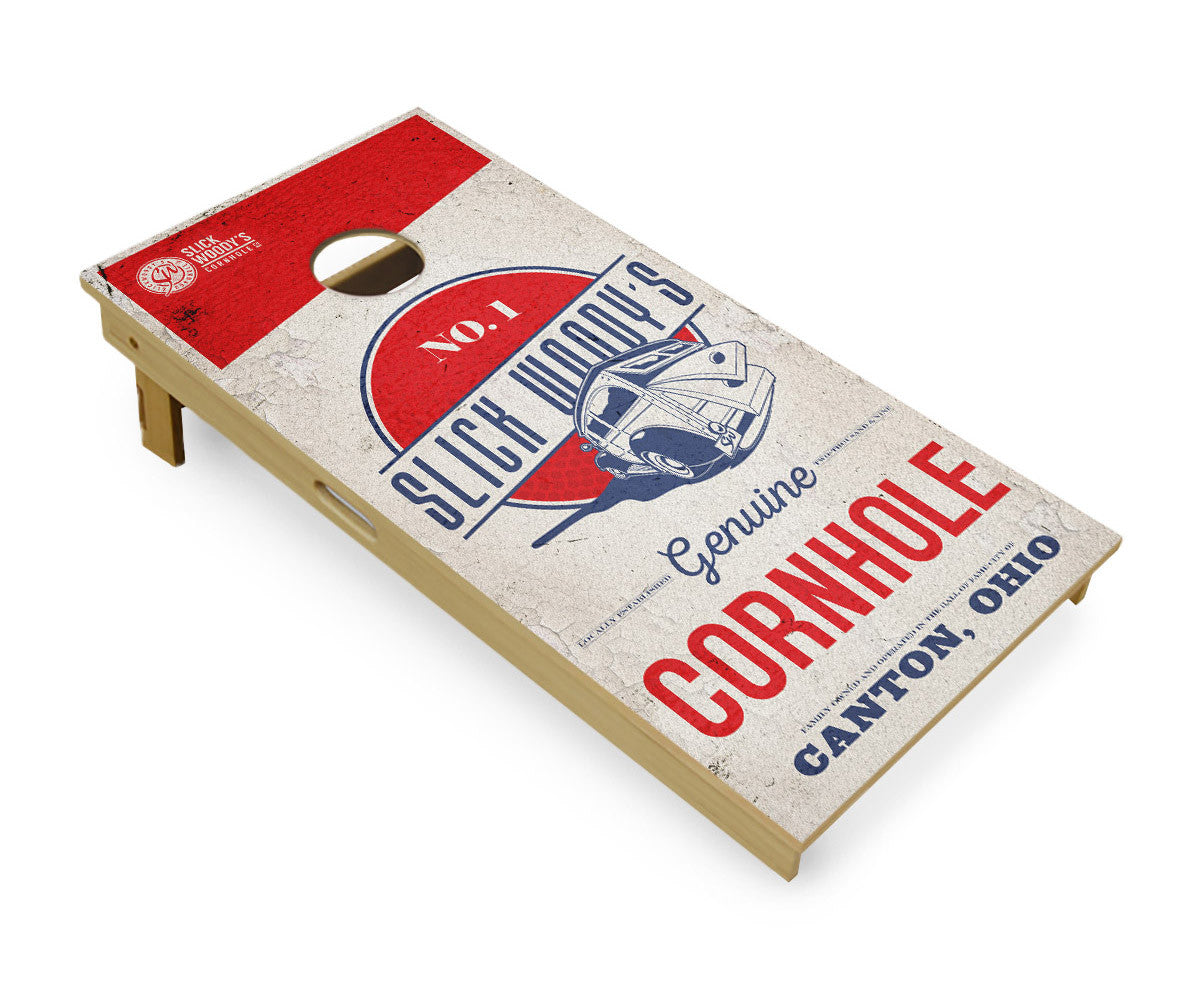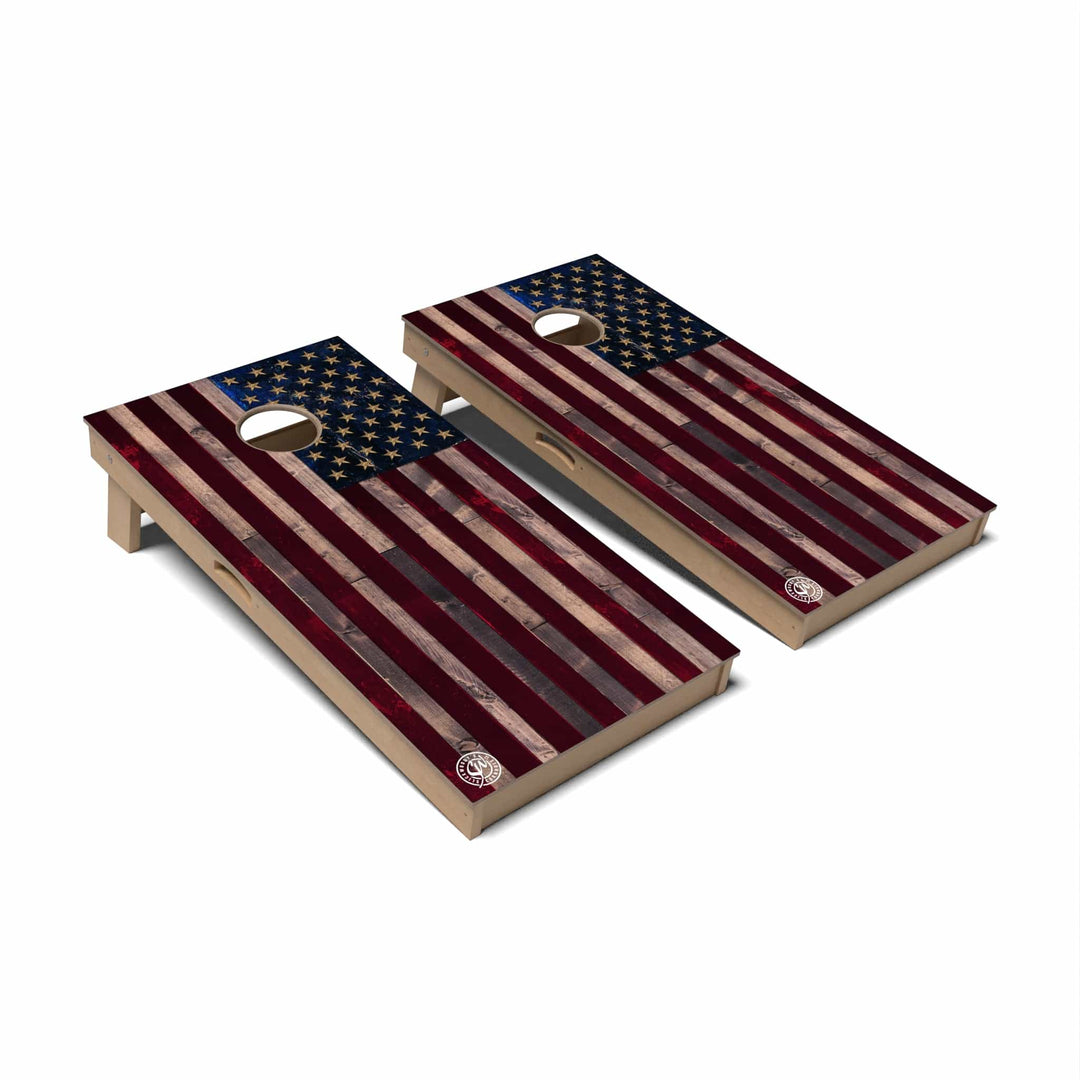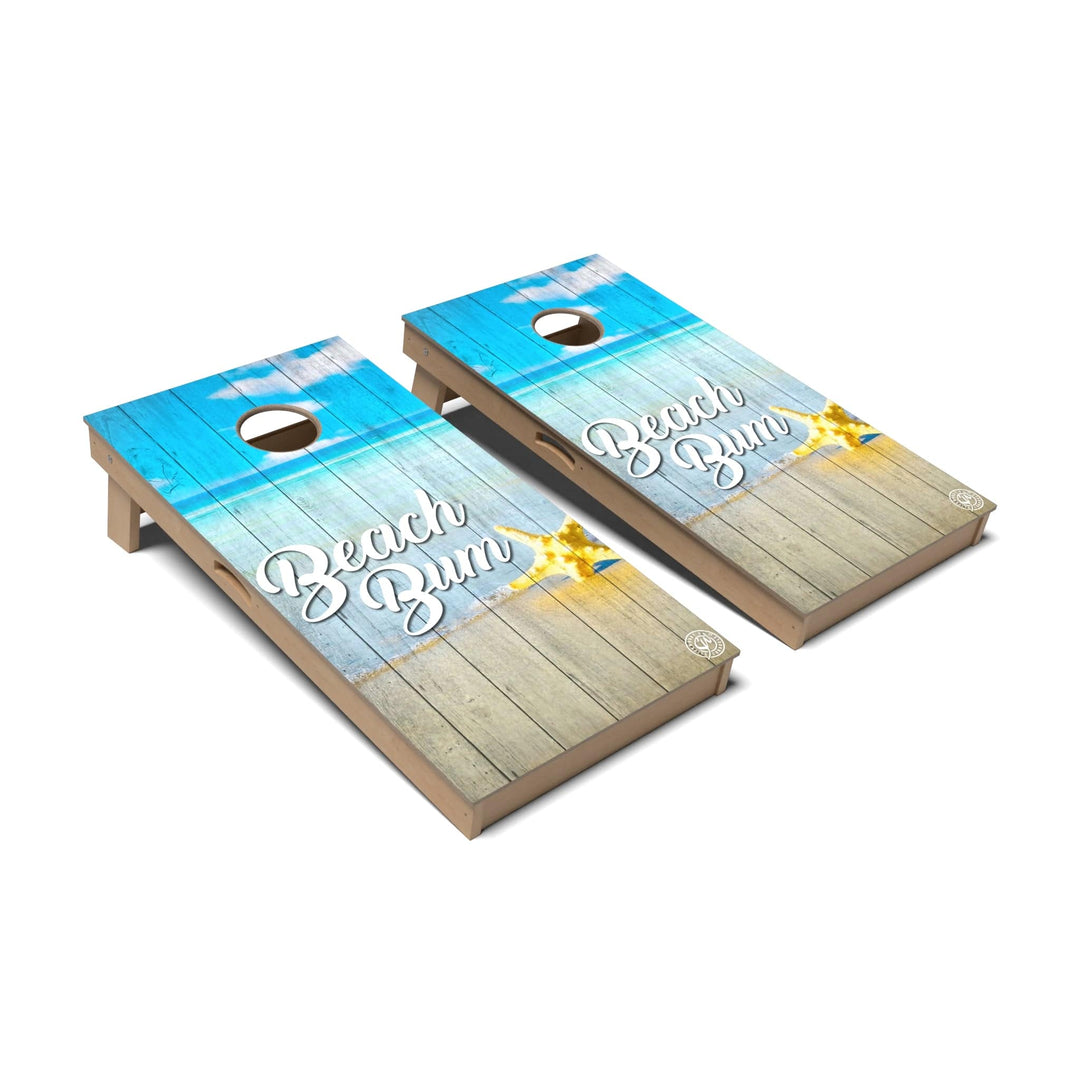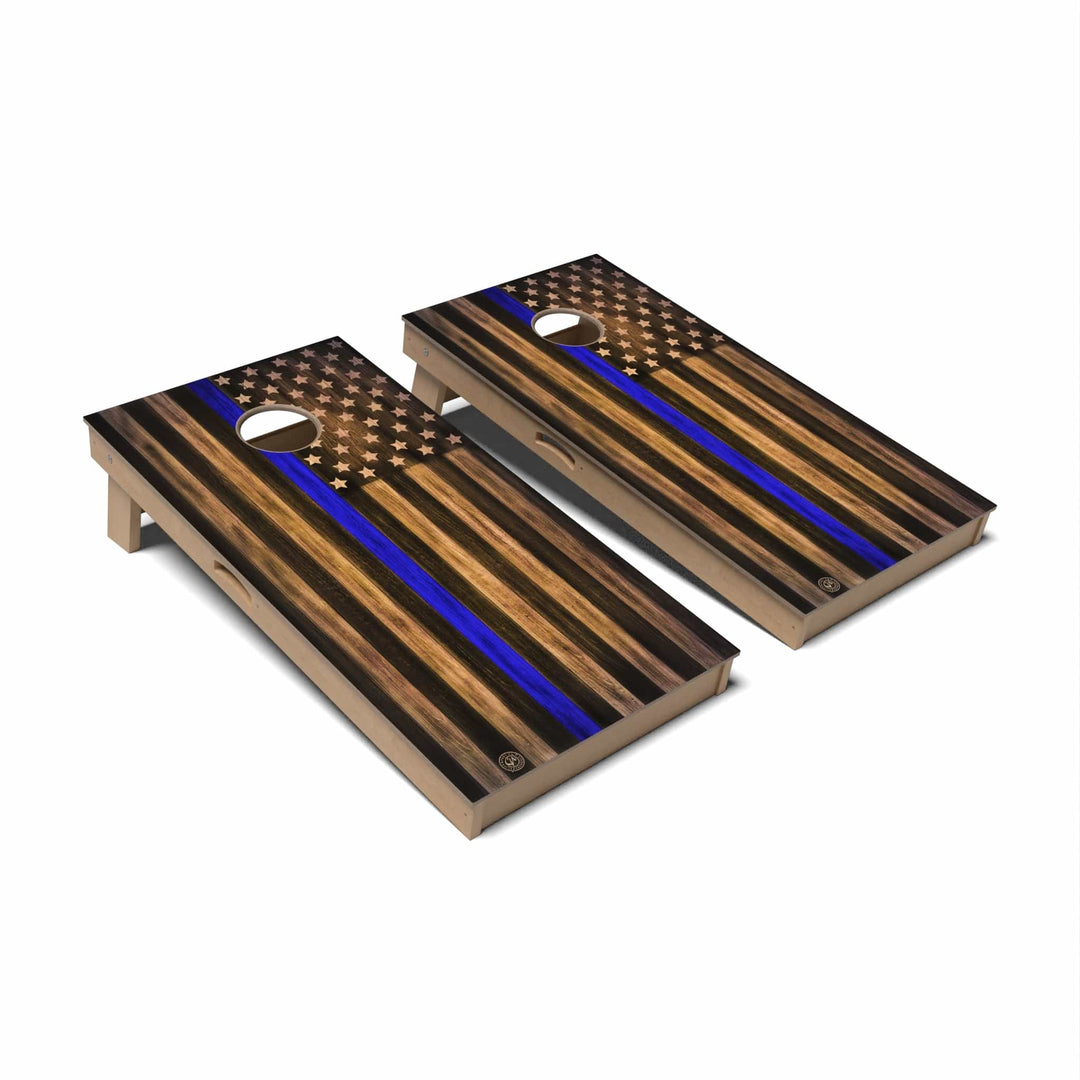Last updated in August 2021
GO BIG OR GO HOME... right? Not necessarily. I know we’re used to hearing that, but when you’re considering cornhole boards, it may be just the opposite. In fact, it could be possible that the big ones have to stay home.
Ever since the first time I played cornhole, almost 15 years ago, I was hooked. And personally, I’m a regulation-size-board-only kind of guy. However, there are pros and cons to each style of cornhole board sets. It’s important to identify what’s essential to you, so you can make an informed buying decision.
Let's figure out which type of cornhole boards you should get.

Regulation Size (2’x4’) vs. Tailgate Size (2’x3’)
When it comes to any type of competition, there is always a standard. There are usually rules and equipment that must meet certain requirements to be considered regulation. In this case, there are a couple of governing bodies that provide this information for cornhole: American Cornhole Organization and American Cornhole Association.

What are regulation size cornhole boards?
- Board tops must measure 4 feet in length and 2 feet in width.
- Board tops must be made of at least ½” thick plywood.
- The hole in the board top must be six inches in diameter and be centered nine inches from the top and 12 inches from each side of the board top edges.
- The front of the cornhole board must be 2-1/2” inches from bottom to top and be at near a 90-degree angle to the board face.
- The back of the cornhole board must be 12 inches from the ground to the highest point of the board and be at a 90-degree angle to the board face.
- The cornhole board playing surface must be finished and/or sanded to a very smooth texture, and there must not be any imperfections in the board that would disrupt play.
The main difference of tailgate size boards when compared to regulation size is, well, the size. We’ll get into that later on.
Pros and Cons Of Regulation Size Cornhole Boards
Pros
The best thing about playing a cornhole game on regulation size cornhole boards is that you know you’re playing the real thing. If you’re an ultra-competitive person, and you like to be the best at everything you do, then you have to go for a regulation set.
It’s kind of like playing with an adjustable basketball hoop. You can lower the rim to whatever height you want so you can make yourself feel better about your game, or you can leave the rim at 10 feet so you can practice and get better at the official height where you know you’ll be measured.
Most people that play cornhole prefer to play on regulation style boards. So that means if you have them, then you’ll most likely be a crowd pleaser at your backyard parties. Correct me if I’m wrong, but doesn’t it stink when you’re hanging out and something comes up in conversation like, “I love to play horseshoes! Do you have a set? Do you want to play?” And you’re like, “Yeah I got some shoes! Let’s get a game going.” Then you go to your garage and you whip out your cheap plastic set of horseshoes that have no weight, and the stake is so weak you can’t barely get in the ground. That’s called a party foul, and no one wants that.
Typically, a regulation style cornhole set will be built sturdier. Most of the time (believe me, not all the time) a regulation set will be made with decent materials. This means they should last a bit longer than the smaller ones. One of the main reasons the smaller sizes were invented was to create a lighter and less expensive product. Usually to meet those requirements, you will find yourself with an inferior product from a company that doesn’t know what they’re doing but making quick money.
Cons
The cons are quite simple: A regulation size set takes up a bit more space, and the boards are generally heavier and more challenging to transport. You’ll need to make space for your cornhole boards in your garage or shed, and you may have to carry them one at a time because they can weigh 20-40 lbs. each depending on the manufacturer.
Trust me… Nothing is more annoying and frustrating than trying to fit large boards in a small car right before you head out to tailgate.
Why Would Anyone Want Tailgate Size Cornhole Boards?

Some people, unlike the group mentioned above, aren’t very competitive and just like to play outdoor games for the heck of it.
Back to the basketball analogy: This type of person will play a pick-up game of hoops with a volleyball because it just doesn’t matter to them. They are just as content using any type of ball because it’s not about winning and losing - it’s about hanging out with friends. That’s where Slick Woody’s tailgate size cornhole boards fit in. They are a great alternative for people who are interested in the social side of the game more than anything else.
Beyond regulation size cornhole boards, there are no real specifications for any other size. Generally though, tailgate size cornhole boards are 3 feet long and 2 feet wide and meet most of the other criteria of the regulation boards.
Pros and Cons of Tailgate Size Cornhole Boards
These boards are best for storage and transport. They take up less space and are significantly lighter than regulation boards.
Sometimes they are made slim enough to fit in the front seat of a car with you. Slick Woody’s has a tailgate style in which the boards fit together and come with an easy-carry bag. Doesn’t get any easier than that for transport!
The cost of a 3’ x 2’ cornhole set is usually less than a regulation set. Because it is lighter and smaller, it can be made for less. You have to watch though because sometimes you will get an inferior product with the 3’ x 2’ bag toss game.
This category of cornhole boards was mainly created for manufacturers to make sets in volume (many times overseas) and offer them at a lower price point with a cheaper shipping rate. Obviously the smaller and lighter the package, the less expensive the shipping cost, which can be a deciding factor for some buyers.
What About Standards for Playing & Cornhole Accessories?
When it comes to playing with regulation or tailgate size boards, you might be wondering… What is a regulation cornhole court? What is the regulation distance between boards in cornhole? Just how heavy should a regulation beanbag be for a real game of cornhole?
The good news is that you can still use the same cornhole rules, scoring method, court size, and beanbags for any size of cornhole boards.
Want to have your own personalized set of cornhole boards? Have us build personalized cornhole boards with your own design.
And, instead of wondering how to make regulation cornhole bags, check out the pro cornhole bags from Slick Woody’s and Reynolds Bags.
The Real Deal
Circling back to what we talked about earlier, if you want to have the baddest set of boards and you want to be completely legit when you talk about your cornhole game, you’ll always find yourself back at the regulation size cornhole boards.
It’s going to be a small investment though, so be prepared to spend a couple hundo on a real deal set. If you get them at the right place, it will be totally worth it! You want to make sure you go to a manufacturer that is well respected in the industry and doesn’t have many bad reviews. (This is true even with smaller boards.) Good luck and happy holin’!
Get a set of cornhole boards designed for your personality and style of play.





